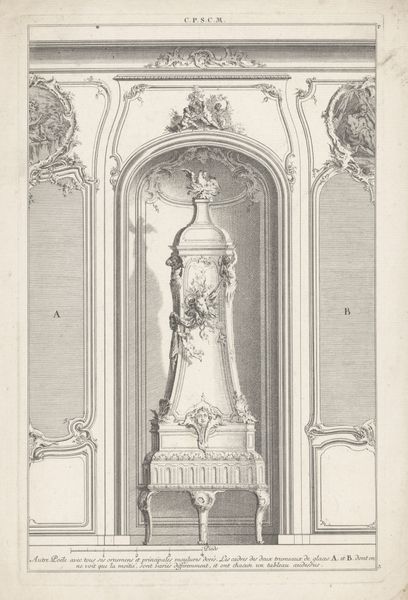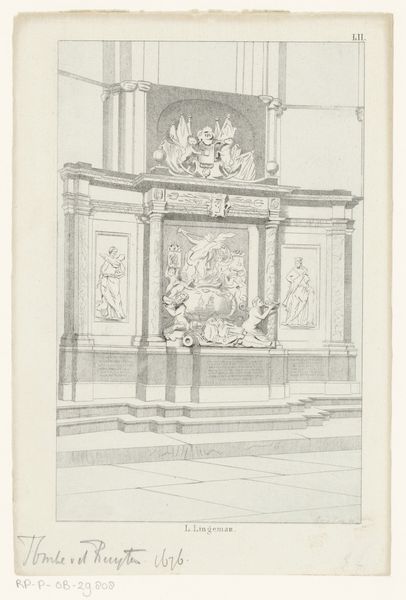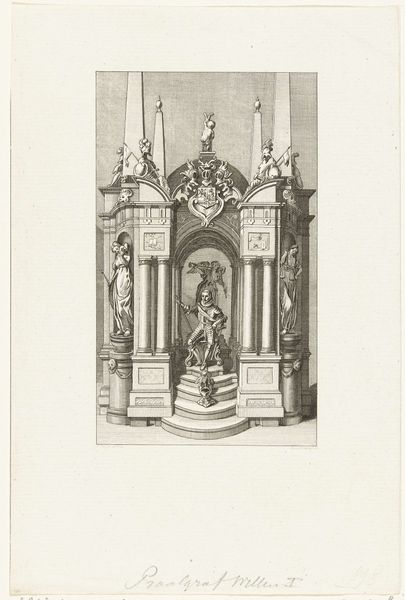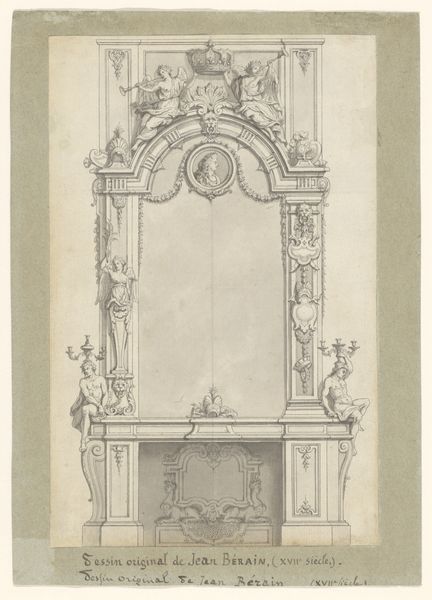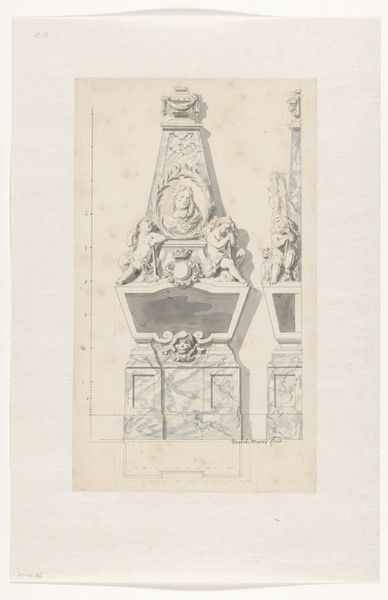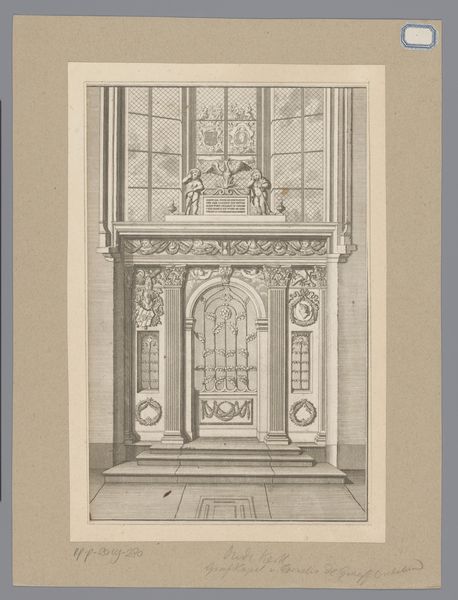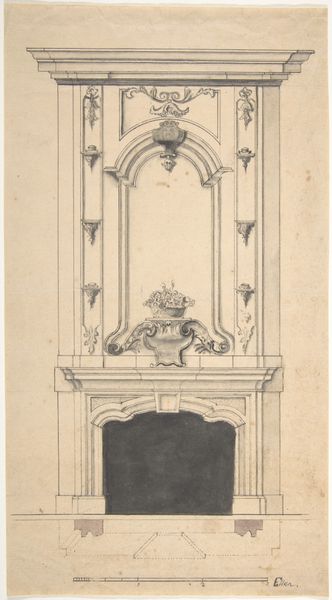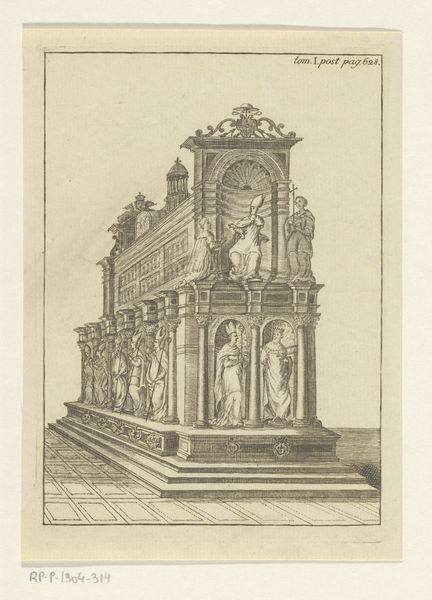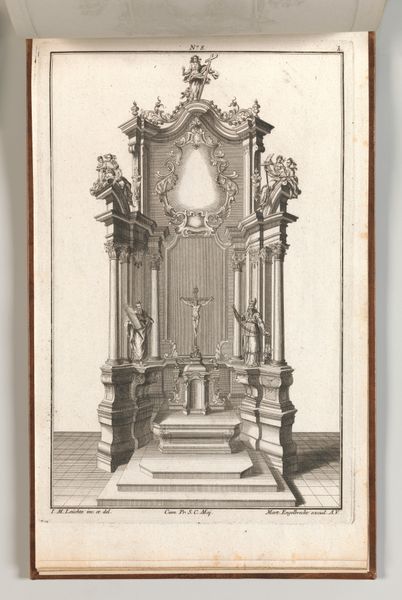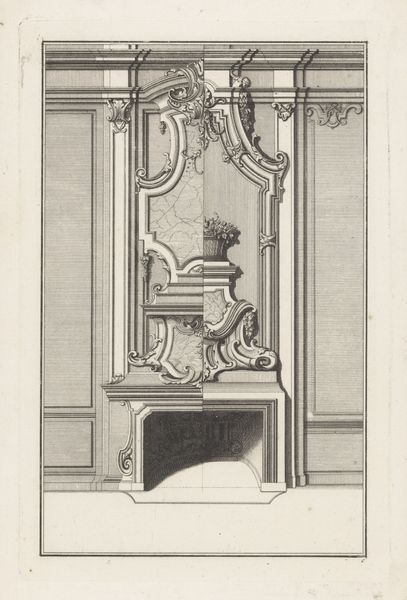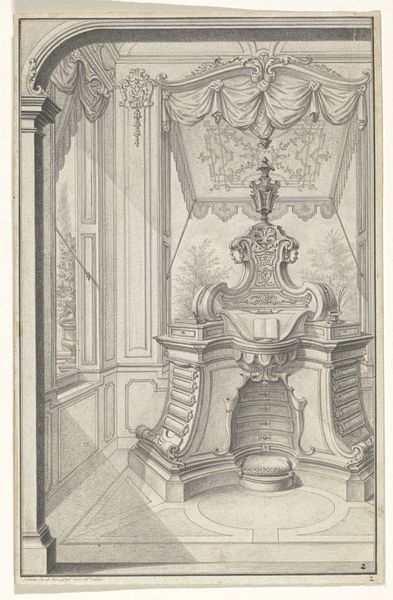
drawing, print, etching, engraving, architecture
#
portrait
#
drawing
#
ink paper printed
# print
#
etching
#
etching
#
figuration
#
history-painting
#
engraving
#
architecture
Dimensions: height 151 mm, width 90 mm
Copyright: Rijks Museum: Open Domain
Editor: This is "Praalgraf van Willem I, prins van Oranje-Nassau," an etching and engraving by Jacobus Buys, dating roughly from 1734 to 1801. The elaborate architectural setting around the sculpture is pretty impressive. What can you tell me about the historical context of this work? Curator: Well, this piece invites us to consider the public role of art and the politics of imagery in the Dutch Republic. It is clearly an image designed for wide circulation. It presents William I not just as a deceased person, but as a foundational figure for the burgeoning nation, enshrined in architecture itself. What does the style of the monument remind you of? Editor: It’s pretty ornate—maybe Baroque? It feels a bit over-the-top for a tomb, almost like it’s meant to project power and importance. Curator: Precisely! And who would have wanted to broadcast such an image, and why? Remember, the House of Orange wasn’t always the uncontested power in the Netherlands. This print reinforces their claim through visual rhetoric and carefully constructed historical narratives. Editor: So the image of the tomb serves as a kind of political statement. I guess I hadn't considered that prints like this could be used to influence public opinion about a historical figure. Curator: Absolutely. Consider who would commission and purchase prints like this? Wealthy citizens invested in the idea of a strong, unified Dutch state. The Rijksmuseum displaying this now further solidifies that message through institutional sanction. It prompts questions of what history gets told, and who does the telling. Editor: I see. This definitely shifts how I view it – less a memorial, more a carefully crafted piece of political messaging reproduced for wide distribution. It definitely illustrates how context really is key to understanding art’s role in society. Curator: Precisely. Examining it this way reveals so much more.
Comments
No comments
Be the first to comment and join the conversation on the ultimate creative platform.
